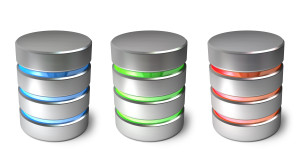This month Oracle is releasing its new in-memory database. Essentially, it is an option that leverages and extends the existing RDBMs code base. Now with Microsoft’s recent entry all four the mega-vendors (IBM, SAP, Microsoft, and Oracle) have in-memory database products.
The Future of Big Data
With some guidance, you can craft a data platform that is right for your organization’s needs and gets the most return from your data capital.
 Which one that is a best fit for a company will depend on a number of factors. If a company is happy with their present RDBMs vendor, then that standard should be evaluated first. However, if a company has more than one RDMBs vendor or if they are looking to make a switch, a more comparative evaluation is needed. In this case companies should evaluate:
Which one that is a best fit for a company will depend on a number of factors. If a company is happy with their present RDBMs vendor, then that standard should be evaluated first. However, if a company has more than one RDMBs vendor or if they are looking to make a switch, a more comparative evaluation is needed. In this case companies should evaluate:
- Maturity of the Offering. All the vendors products have different support “traditional” RDMS functionality like referential integrity, support for stored procedures, and online backups – to name a few. Make sure you understand the vendor’s current and near-term support for features that you require.
- Performance. All IMDB vendors promise and from all accounts, deliver significantly increased performance. However, the vendor’s ability to provide the level of desired performance on the company’s proposed query profile and the ability of the vendor’s technology to scale out should be evaluated. Compression and columnar storage will also affect performance, so understanding these features to support a company’s requirements is necessary.
- Sourcing of On-Disk Data. Probably the biggest difference in architecture and maturity between the vendors is their ability to source data from on disk storage systems, either files, traditional RDBMs, or Hadoop systems.
- Licensing & Cost Model. The costs associated with a licensing and implementing a technology need to be closely evaluated. How much training is required to develop a competency with a new technology? Is the licensing model favorable to how an enterprise uses/purchases licenses?
There are other evaluation areas, as well. For instance with SAP’s HANA offering has a robust BI metadata layer (think Business Objects Universe) that may be of value for a number of companies.
In-Memory Databases are changing and evolving quickly. So, make sure the appropriate due diligence is competed before investing in a selected technology.
